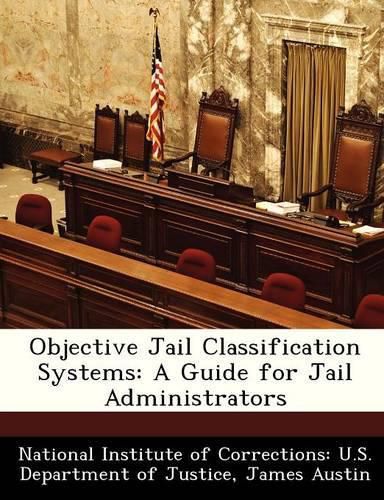Readings Newsletter
Become a Readings Member to make your shopping experience even easier.
Sign in or sign up for free!
You’re not far away from qualifying for FREE standard shipping within Australia
You’ve qualified for FREE standard shipping within Australia
The cart is loading…






Objective jail classification (OJC) is a process of assessing every jail inmate’s custody and program needs and is considered one of the most important management tools available to jail administrators and criminal justice system planners. An effective system of inmate classification will reduce escapes and escape attempts, suicides and suicide attempts, and inmate assaults. OJC systems use locally developed and validated instruments, one at intake and another after a period of confinement, that identify the level of risk and needs presented by an inmate so that appropriate housing and program assignments can be made. The data generated through the classification process can also be used for operational, management, and planning purposes. This guide to OJC is intended for both jail administrators and other officials involved in local criminal justice system issues. It discusses key components of an OJC system, including instruments that use reliable and valid criteria, overrides by classification staff, staff training and commitment to OJC, and a housing plan that is consistent with classification outcomes. The author outlines specific aspects of system implementation, automation, monitoring, and evaluation of OJC systems. Policy implications and recommendations are also discussed.
$9.00 standard shipping within Australia
FREE standard shipping within Australia for orders over $100.00
Express & International shipping calculated at checkout
Objective jail classification (OJC) is a process of assessing every jail inmate’s custody and program needs and is considered one of the most important management tools available to jail administrators and criminal justice system planners. An effective system of inmate classification will reduce escapes and escape attempts, suicides and suicide attempts, and inmate assaults. OJC systems use locally developed and validated instruments, one at intake and another after a period of confinement, that identify the level of risk and needs presented by an inmate so that appropriate housing and program assignments can be made. The data generated through the classification process can also be used for operational, management, and planning purposes. This guide to OJC is intended for both jail administrators and other officials involved in local criminal justice system issues. It discusses key components of an OJC system, including instruments that use reliable and valid criteria, overrides by classification staff, staff training and commitment to OJC, and a housing plan that is consistent with classification outcomes. The author outlines specific aspects of system implementation, automation, monitoring, and evaluation of OJC systems. Policy implications and recommendations are also discussed.